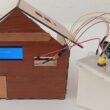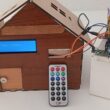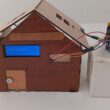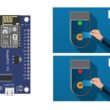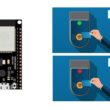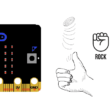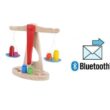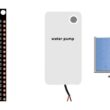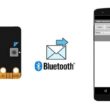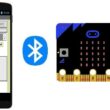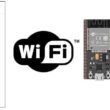Read temperature and humidity measured by DHT22 sensor connected to ESP32 board
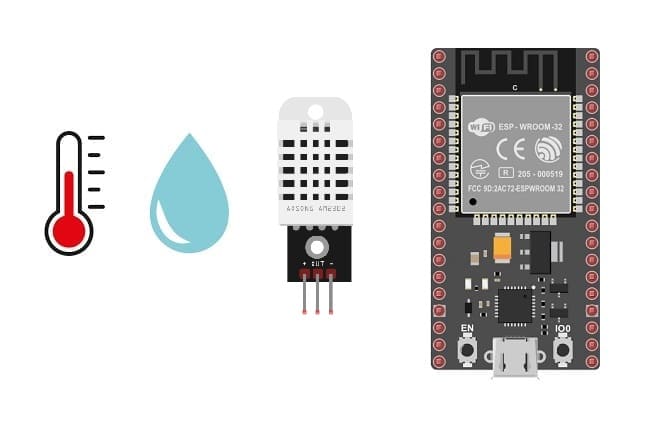
Tutorial plan
1- What is the DHT22 sensor ?
2- How does the ESP32 board receive the temperature and humidity measured by the DHT22 sensor ?
3- The necessary components to control the DHT22 sensor by the ESP32 card
4- Mounting the ESP32 card and the DHT22 sensor
5- Programming the ESP32 board with Micropython to receive the temperature and humidity measured by the DHT22 sensor
What is the DHT22 sensor ?
The DHT22 sensor, also known as the AM2302, is a digital temperature and humidity sensor. It is commonly used in electronic projects and IoT (Internet of Things) applications to measure and monitor environmental conditions. The sensor is capable of providing accurate and reliable readings for both temperature and humidity.
Key features of the DHT22 sensor include:
1- Digital Output: The DHT22 provides a digital output signal, making it easy to interface with microcontrollers and other digital devices.
2- Temperature Measurement: The sensor can measure temperature in a range typically from -40°C to 80°C with an accuracy of ±0.5°C.
3- Humidity Measurement: It can measure humidity in a range usually from 0% to 100% with an accuracy of ±2%.
4- Low Power Consumption: The sensor is designed to operate with low power consumption, making it suitable for battery-powered applications.
5- Single-Bus Communication: The DHT22 communicates with the microcontroller using a single-wire digital communication protocol, simplifying the wiring and making it easy to integrate into projects.
6- Calibration: Some DHT22 sensors come pre-calibrated, eliminating the need for additional calibration steps in many applications.
To use the DHT22 sensor, you typically connect it to a microcontroller or a development board (such as Arduino or Raspberry Pi) using its digital communication protocol. Libraries and code examples are often available to facilitate the integration of the sensor into various projects. It is commonly employed in weather stations, home automation systems, and other applications where monitoring temperature and humidity is essential.
How does the ESP32 board receive the temperature and humidity measured by the DHT22 sensor ?
To interface the DHT22 sensor with an ESP32 board and receive temperature and humidity readings, you need to connect the sensor to the ESP32 and then use appropriate libraries and code to read data from the sensor. Here's a general guide on how you can achieve this:
Hardware Connection:
Connect the DHT22 sensor to the ESP32 board. The DHT22 usually has three pins: VCC (power), Data, and GND (ground). Connect them as follows:
Connect the VCC pin to a 3.3V output on the ESP32.
Connect the GND pin to the ground (GND) on the ESP32.
Connect the Data pin to a GPIO pin on the ESP32 (you can choose any available GPIO pin).
Software Setup:
Install the necessary libraries:
Use the Thonny or PlatformIO to program your ESP32. You'll need to install the DHT sensor library for ESP32.
Write the code using the DHT sensor library
Mounting the ESP32 card and the DHT22 sensor
ESP32 board:

The ESP32 is a powerful microcontroller developed by Espressif Systems. It's renowned for its integrated Wi-Fi and Bluetooth capabilities, making it a popular choice for various IoT (Internet of Things) applications.
DHT22 Temperature and Humidity Sensor

The DHT22 sensor is a digital temperature and humidity sensor
Jumper Wires:

For making temporary connections and wiring between components.
Breadboard:

A breadboard is a useful tool for creating temporary electronic circuits. It allows you to connect components without soldering.
Mounting the ESP32 card and the DHT22 sensor
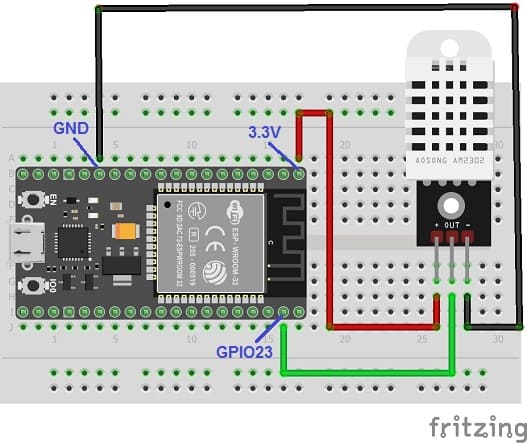
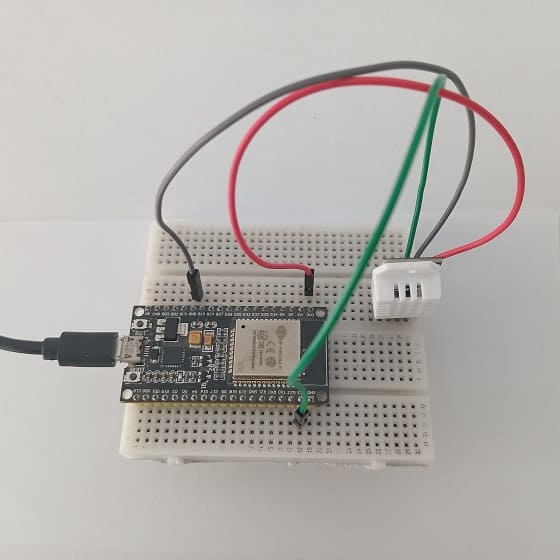
This represents the basic connections between the DHT22 sensor and the ESP32 board:
- Connect the (+) pin of the DHT22 sensor to the 3.3V pin on the ESP32 board.
- Connect the OUT pin of the DHT22 sensor to a digital pin 2 on the ESP32 board.
- Connect the (-) pin of the DHT22 sensor to any ground (GND) pin on the ESP32 board.
Programming the ESP32 board with Micropython to receive the temperature and humidity measured by the DHT22 sensor
To receive temperature and humidity readings from a DHT22 sensor using Micropython on an ESP32, you can follow these steps:
1- Flash Micropython onto ESP32: Make sure you have Micropython installed and running on your ESP32. There are various methods to flash Micropython onto ESP32 boards; you can use esptool or other flashing tools.
2- Hardware Connection: Connect the DHT22 sensor to your ESP32. Usually, this involves connecting the data pin of the sensor to a digital pin on the ESP32.
3- Micropython Code: Below is an example code in Micropython to read temperature and humidity from a DHT22 sensor:
4- Uploading the Code: Use tools like Thonny IDE or ampy to upload this code onto your ESP32.
This code continuously reads temperature and humidity data from the DHT22 sensor and prints it to the REPL (Read-Eval-Print Loop) console in Micropython. You can view these readings by connecting to the REPL via a serial terminal.

